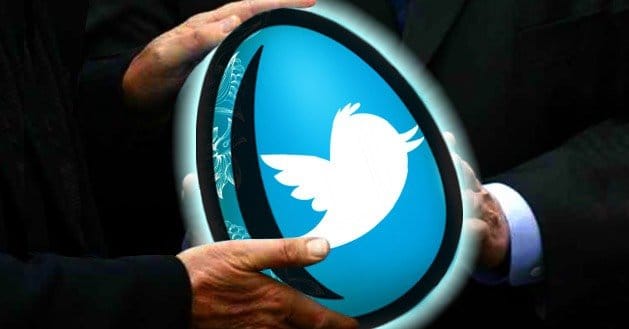 Written by ContentPowered.com
Written by ContentPowered.com
Twitter has a few great purposes. It’s excellent for fast-paced social justice journalism, as seen in Ferguson recently. It’s equally great for long-term social movements, like the #yesallwomen tag. It’s a fun tool for talking to your family and friends in public. It has an entire subculture devoted to weird nonsensical, surreal art. Of course, it’s also great for businesses, which is why you’re here.
There’s a lot to consider when you get started with Twitter for business. Thankfully, there’s this guide, now published just for you.
Setting up a Profile
It all begins with registration. Visit Twitter.com and sign up with your name, email and desired password. Assuming they all check out, you then move on to fill out the rest of your information.
The important part here is your username. You want to keep it short, because people will want to @mention you, and if your username takes up too much space you’re restricting their ability to create tweets. Whenever possible choose something directly related to your brand name.
If your brand name is taken, you have a few options. If the owner has parked the username or if it’s inactive, you may be able to recover and claim it. If it’s run by a legitimate user or a different company with a similar name, you may have a harder time of it.
It’s possible to change your username later, but you might not want to. It doesn’t retroactively change search indexing, for one, and it can confuse users. Confirm your account through your email address and you’re good to go.
Filling Out Information
Your Twitter profile is like a tiny, optimized landing page for social users. Use it effectively. Twitter is all about optimizing your communication to fit into small spaces. This means you don’t have a lot of space to make your case in your profile.
Choose an appropriate profile picture. If your account follows the name of the CEO, use a picture of the person in charge. If your account is representing a brand, use a logo. You can change up this picture at any time, so don’t stress too much about picking the perfect share of taupe for the background on your logo.
Choose a cover photo that represents your brand in some way. Retail stores with physical locations can take a panoramic picture of their storefront, or some local landmark. Online businesses can create graphics advertising their products, showing an office scene or anything else. The sky is the limit here.
Fill out your profile. You only have a tiny amount of space for information. Optimize it for a primary keyword and include your brand name. Don’t worry about location or website link, those can go in other fields. Avoid too much duplication.
Get Active
Dive into the deep end. There’s no reason to take it slow on Twitter. Most businesses tweet content 4-6 times per day, some more, some less. Find a volume that works best for your audience and start creating tweets. You should never be stumped for content; there’s a lot you can tweet.
- Tweet links to interesting, relevant content you find online.
- Tweet messages that humanize your brand or get to know your users.
- Tweet contests or promotions that are only available to Twitter users.
- Tweet customer service queries. Note: Twitter is great for fast customer service, but if your brand is large enough, you may want to split off to a dedicated customer service account. @Example and @ExampleCS, for, well, example.
- Tweet content you write and publish on your own blog. Some self-promotion is okay, as long as it’s not the only thing you do.
- Tweet industry news.
- Tweet jokes, humor, memes or anything else that shows you’re in touch with your audience.
Without content, you can’t attract followers. No one wants to follow an account with no content production, what’s the point?
Follow people. Some of them will follow you in return, others won’t. If they don’t, don’t worry about it. Follow people whose opinions and posts you find interesting. Follow people who are important to your industry. Follow anyone and everyone who might tweet something you want to see. If you find yourself following people you don’t like, remove them. If you find yourself following too many people, segment them into lists.
Post your Twitter account everywhere. Where is everywhere? Everywhere!
- Post a link to your Twitter feed on Facebook, Google+, LinkedIn, Pinterest, Instagram, Tumblr, StumbleUpon, Reddit and any other site you use.
- Post a link or write a dedicated blog post about your new Twitter account on your site.
- Post a social sharing button on your website, so users can follow at a click.
- Use a Twitter plugin to allow users to quickly and easily tweet content from your posts.
- Mention your new Twitter account in your PPC advertising.
- Mention your new Twitter account in your newsletter.
In short; post it everywhere. Once you’ve exhausted all of your organic sources, run advertising to gain more followers.
At this point, you’re well positioned to snowball. More content retweeted by more followers brings in even more followers, who can show you more content and retweet more of your content.
Tips for Advanced Users
As you grow, you’re going to want to manage your time better. One thing you can do is schedule the majority of your tweets using a service like HootSuite. That, or Buffer, or another similar tool, allows you to schedule posts to be tweeted in the future. It will help free up time for more engaging work.
You will need to learn to utilize hashtags. There are essentially three kinds of hashtags. First are the active, ongoing tags. These you can use by participating in conversations. Never try to hijack the conversation; add to it, don’t dominate it. The second are the dead hashtags. These may have been in use at some point, but have ceased to be active for at least six months. You can generally hijack these, as long as they aren’t branded. Third are the branded hashtags you create or run with yourself. Use these frequently, particularly for promotions and company-specific announcements.




